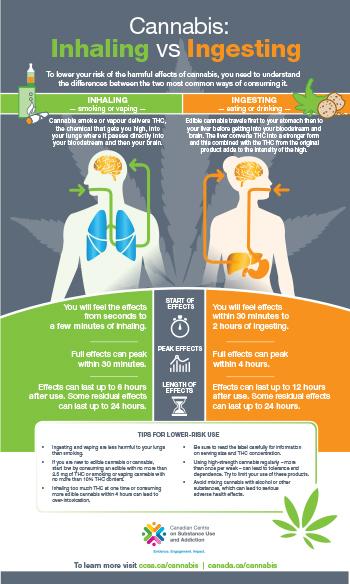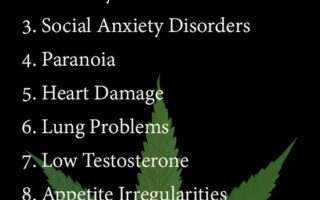Exploring the Spectrum: The Multifaceted Effects of Cannabis
As the sun rises on the modern landscape of both science and culture, one plant continues to spark curiosity, controversy, and conversation — cannabis. Once cloaked in stigma, the cannabis plant has emerged from the shadows, dominating discussions about health, wellness, and lifestyle. From its ancient roots as a medicinal herb to its current status as a legal commodity across various regions, cannabis presents a complex tapestry of effects that span the physical, psychological, and social realms. In this article, we will embark on an exploration of the diverse impacts of cannabis on the human experience, delving into its myriad influences on our bodies and minds, as well as the broader implications for society. Join us as we navigate the intricate journey of understanding this multifaceted plant, shedding light on what is often overshadowed by headlines and hype.
Table of Contents
- Exploring the Psychological Impacts of Cannabis Use
- Understanding the Physiological Changes Induced by THC
- Navigating the Social and Behavioral Effects of Cannabis
- Recommendations for Responsible Consumption and Safe Practices
- Q&A
- In Retrospect
Exploring the Psychological Impacts of Cannabis Use
The relationship between cannabis use and psychological health is multifaceted, revealing a spectrum of effects that can vary significantly among individuals. Users often report an increased sense of relaxation and enhanced creativity. However, these benefits can be counterbalanced by potential negative outcomes, including heightened anxiety and an increased risk of developing psychosis in predisposed individuals. Research suggests that the frequency and quantity of cannabis consumption play a crucial role in shaping these psychological effects, with occasional use often associated with positive experiences, while chronic use may lead to cognitive impairment and emotional disturbances.
To better understand these dynamics, consider the following factors that mediate the psychological impacts of cannabis:
- Dosage: Higher doses can amplify both the desired and adverse effects.
- Individual Differences: Genetic predispositions can influence how cannabis affects mood and cognition.
- Type of Cannabis: The balance of THC and CBD can alter the psychological experience.
- Setting and Environment: Where and with whom cannabis is consumed can significantly impact its effects.
| Effect | Positive Aspects | Negative Aspects |
|---|---|---|
| Relaxation | Decreases stress | Can lead to lethargy |
| Creativity | Enhances artistic expression | Might impair focus |
| Anxiety | Can provide temporary relief | Potential for increased paranoia |
| Cognitive Function | May increase open-mindedness | Could impair short-term memory |
Understanding the Physiological Changes Induced by THC
When tetrahydrocannabinol (THC) enters the body, it interacts primarily with the endocannabinoid system, which plays a crucial role in regulating various physiological processes. This interaction leads to remarkable changes that can be both beneficial and challenging. THC binds to CB1 receptors, predominantly found in the brain and central nervous system, resulting in alterations to mood, memory, and coordination. The activation of these receptors can lead to sensations of euphoria, relaxation, and heightened sensory perception, which many users find pleasurable. However, the flip side of this interaction can include anxiety, paranoia, and cognitive impairments, especially in inexperienced users or in high doses.
The cardiovascular system also feels the influence of THC, as it can cause increased heart rate and changes in blood pressure. This phenomenon occurs as THC dilates blood vessels, leading to improved blood flow but possible dizziness in some users. Additionally, THC can induce appetite stimulation—a condition often referred to as “the munchies.” This effect is tied to the activation of the hypothalamus, which governs hunger and satiety. Moreover, THC’s impact on the digestive system might lead to nausea relief for some, while others may experience adverse effects. Understanding these varied physiological changes reveals the intricate dance of THC within the body.
Navigating the Social and Behavioral Effects of Cannabis
The social landscape surrounding cannabis is evolving, influenced by shifting cultural perceptions and legality across various regions. As use becomes more common, understanding the interpersonal dynamics that cannabis can affect is vital. Those who consume cannabis may experience altered social interactions, which can manifest as increased euphoria and connectivity or, conversely, lead to isolation and withdrawal. For some, the substance fosters deeper interactions with peers, creating environments where conversations flow more easily. Others may find that the experience of being high inhibits their social engagement, leading to a potential decline in relationships and support networks.
The behavioral effects of cannabis consumption can also generate distinctive patterns of decision-making and emotional regulation. From impulsivity in social settings to a heightened sense of creativity, the impact varies widely among users. It is essential to recognize these dual aspects, as they may significantly influence daily life and obligations. For a comprehensive examination, consider the following table highlighting common behavioral trends associated with cannabis use:
| Behavior | Possible Effect |
|---|---|
| Increased Sociability | Enhancement of communication and bonding with others |
| Increased Creativity | New ideas and perspectives may emerge during brainstorming |
| Impaired Decision-Making | Potentially risky choices in social settings |
| Withdrawal | Social self-isolation and disconnection from peer dynamics |
Recommendations for Responsible Consumption and Safe Practices
As interest in cannabis use continues to grow, it’s essential to approach consumption with a sense of responsibility and awareness. Whether for medicinal or recreational purposes, making informed choices can significantly impact your experience and well-being. Consider the following guidelines to foster safe practices:
- Know Your Strain: Different strains have varying effects. Research or consult with knowledgeable sources to understand which strains suit your needs.
- Start Slow: If you’re new to cannabis, initiate with small doses. This helps gauge your personal tolerance levels before increasing usage.
- Stay Informed: Regularly check updates from reliable sources about regulations, as laws governing cannabis can frequently change.
- Use in Safe Environments: Always consume cannabis in a safe and comfortable space to enhance your experience and reduce anxiety.
When sharing cannabis with others, practicing moderation and communication is vital. Establish clear rules before starting to ensure everyone understands dosage limitations and their comfort levels. Keep in mind the following considerations:
| Factor | Recommendation |
|---|---|
| Sharing with Friends | Clearly communicate individual limits and preferences. |
| Driving or Operating Machinery | Always refrain from these activities after consumption. |
| Conservative Use | Limit consumption in unfamiliar settings or with new products. |
Q&A
Q&A: Understanding the Effects of Cannabis
Q: What is cannabis and why is it commonly used?
A: Cannabis, often referred to as marijuana, is a plant known for its psychoactive properties due to compounds called cannabinoids, the most notable being THC (tetrahydrocannabinol) and CBD (cannabidiol). People use cannabis for various reasons, including recreational enjoyment, medical purposes, and even as a cultural or spiritual symbol.
Q: How does cannabis affect the brain?
A: Cannabis interacts with the endocannabinoid system in the brain, which plays a crucial role in regulating mood, memory, appetite, and pain sensation. THC binds to cannabinoid receptors, often leading to alterations in perception, euphoria, and relaxation, while CBD is known for its potential calming effects without the “high.”
Q: What are some short-term effects of cannabis use?
A: Short-term effects can include euphoria, altered sensory perception, increased appetite, and impaired coordination. Some users may also experience anxiety, paranoia, or short-term memory impairment. The intensity of these effects can vary based on the method of consumption and the individual’s tolerance.
Q: Are there any long-term effects of cannabis use?
A: Long-term effects may vary greatly among users. Chronic use can lead to dependence in some individuals and may also impact cognitive function, particularly in young users whose brains are still developing. Some studies suggest potential respiratory issues for those who smoke cannabis regularly, while other research indicates that medical use may benefit certain conditions, like chronic pain and epilepsy.
Q: Can cannabis be beneficial for medical purposes?
A: Yes, cannabis has been recognized for its potential therapeutic benefits. Research indicates that it may help alleviate symptoms associated with chronic pain, multiple sclerosis, and chemotherapy-induced nausea. CBD, in particular, has gained attention for its anti-inflammatory and anti-seizure properties. However, the appropriateness of cannabis as a medical treatment should always be discussed with a healthcare professional.
Q: How does cannabis affect different individuals?
A: Cannabis affects individuals uniquely based on various factors, including genetics, existing health conditions, tolerance levels, and the strain consumed. While some may find it relaxing, others may experience anxiety or discomfort. Thus, understanding one’s own body and responses is essential when considering cannabis use.
Q: Is there a difference between THC and CBD?
A: Yes, THC and CBD offer distinctly different effects. THC is primarily responsible for the psychoactive “high,” while CBD is non-psychoactive and is often sought for its potential therapeutic effects, such as reducing anxiety and inflammation without producing intoxication.
Q: What are the legal implications surrounding cannabis use?
A: Cannabis legality varies worldwide, with some places fully legalizing its use, while others impose strict regulations or outright bans. It’s crucial for users to familiarize themselves with local laws regarding possession, use, and distribution to avoid legal complications.
Q: How can one use cannabis responsibly?
A: Responsible usage involves understanding one’s limits, starting with lower doses, and choosing safe environments for use. It’s also vital to avoid combining cannabis with other substances, like alcohol or heavy machinery operation, to minimize risks. For those using it medicinally, consulting with a healthcare professional is recommended for safe and effective use.
Q: What is the current research direction on cannabis?
A: Research on cannabis is expanding rapidly, examining everything from its biochemical effects to long-term health implications. Ongoing studies focus on better understanding its medicinal properties, optimizing strains for therapeutic benefits, and assessing its impact on mental health. As legal barriers diminish in many regions, a wealth of new information is anticipated in the coming years.
By fostering a greater understanding of cannabis effects, users can make informed choices, free from the haze of misinformation.
In Retrospect
As we draw the curtain on our exploration of the multifaceted effects of cannabis, it’s clear that this plant carries with it both the promise of therapeutic relief and the weight of potential risks. From its ancient roots as a medicinal resource to its contemporary role in the realm of wellness and recreation, cannabis is interwoven with the narratives of health, policy, and personal choice.
While studies continue to unravel the complexities of its impact on the body and mind, it remains essential for individuals to approach cannabis with informed caution. The distinctions between strains, consumption methods, and individual experiences are vast, making awareness and education paramount in navigating this evolving landscape.
the effects of cannabis are not merely a matter of what is known, but also a canvas of ongoing discovery—a testament to the interplay of nature and human ingenuity. Whether viewed through the lenses of medicine, leisure, or social dynamics, understanding cannabis invites a broader conversation about its place in our lives, urging us to ponder not just what cannabis can do, but how it fits into the tapestry of our shared human experience.



